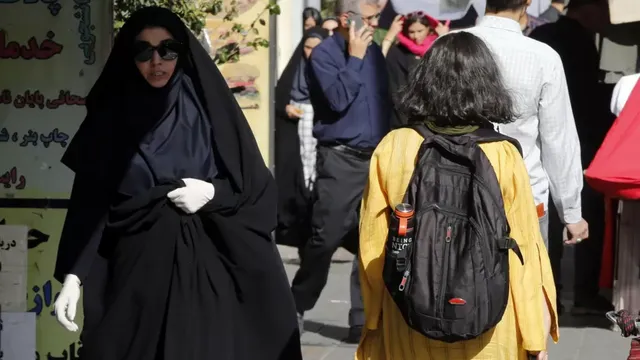Iran's Controversial Bill: Harsh Penalties for Dress Code Violation
In recent news, Iran's parliament has passed a highly controversial bill aimed at enforcing a strict dress code for women and girls. This bill, known as the "Hijab and Chastity Bill," proposes severe penalties for those who do not adhere to the country's dress code standards. In this article, we will delve into the details of this bill, its implications, and the broader context surrounding it.
The Bill's Provisions
The "Hijab and Chastity Bill" seeks to increase prison terms and fines for women and girls who are deemed to be dressed "inappropriately" in public places. Here are some of the key provisions of the bill:
Harsh Penalties
Under this bill, individuals caught dressed "inappropriately" may face a "fourth-degree" punishment. According to the Iranian penal code, this translates to a prison sentence ranging from five to ten years and fines ranging from 180 million to 360 million rials ($3,651 to $7,302).
Media and Social Networks
The bill extends its reach to the media and social networks. It proposes fines for those "promoting nudity" or "making fun of the hijab" through these platforms. This reflects the government's efforts to control and regulate online discourse related to dress code violations.
Vehicle Owners' Responsibility
Furthermore, the bill holds vehicle owners accountable. If a female driver or passenger in a vehicle is not wearing the hijab or appropriate clothing, the owner of the vehicle can also be fined. This provision is seen as an attempt to exert influence over the private sphere of individuals.
Organized Promotion
The bill goes even further by targeting those who promote violations of the dress code "in an organized manner" or "in cooperation with foreign or hostile governments, media, groups, or organizations." Such individuals could face imprisonment for a period of five to ten years.
Context and Controversy
The passing of this bill has sparked significant controversy, both within Iran and internationally. To understand the reasons behind this controversy, we need to consider the broader context:
Protests and Civil Unrest
The backdrop to this bill is a wave of protests that erupted in Iran following the death of Mahsa Amini, who died in the custody of the morality police for an alleged improper hijab. These protests saw women openly defying the dress code, often by burning their headscarves or waving them in defiance. The government responded with a harsh crackdown, leading to the deaths of hundreds of protestors.
Erosion of Traditional Norms
Despite the government's efforts to enforce the dress code through morality police and surveillance cameras, an increasing number of women and girls in Iran have stopped covering their hair in public. This shift reflects a growing desire for personal freedom and autonomy among the younger generation.
International Concern
Internationally, this bill has raised alarm. Eight independent UN human rights experts have described it as a form of "gender apartheid." They argue that it represents systemic discrimination against women and girls, with the intention of suppressing them into total submission. The bill's provisions have also been criticized for violating fundamental rights, including the right to freedom of expression and the right to peaceful protest.
Conclusion
Iran's "Hijab and Chastity Bill" is a significant development that seeks to reinforce the country's strict dress code for women and girls. While proponents argue that it upholds traditional values, critics view it as a regressive step that infringes on individual freedoms and human rights. The bill's fate now rests with the Guardian Council, a conservative body, which will determine whether it aligns with the constitution and Sharia law.
FAQs
What is the current dress code for women in Iran?
The current dress code in Iran mandates that women and girls above the age of puberty must cover their hair with a hijab and wear long, loose-fitting clothing.How did the death of Mahsa Amini impact the dress code protests in Iran?
Mahsa Amini's death in custody ignited widespread protests in Iran, with many women openly defying the dress code as a form of protest.
